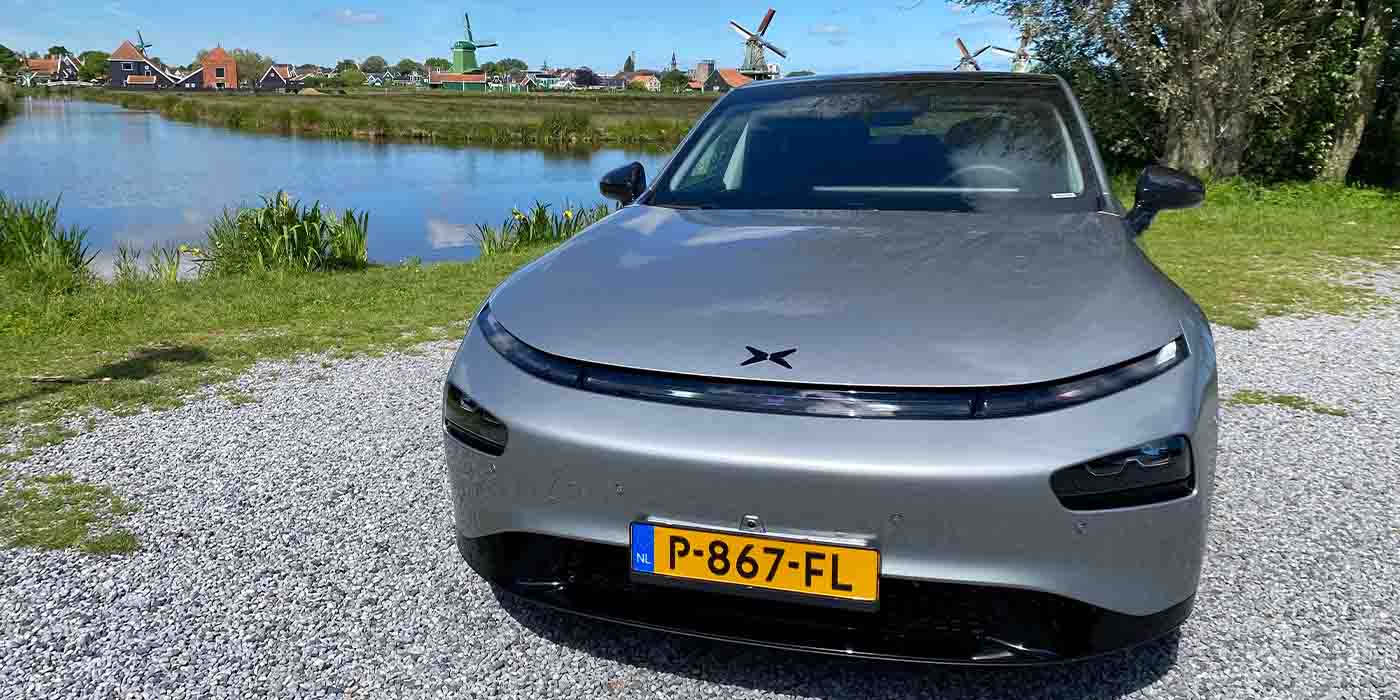
As Chinese EV automaker XPeng continues its market expansion into Europe, it has already set up shop in the Netherlands with the intent to inevitably begin sales there. While XPeng determines whether to bring its P5 or P7 sedan to the Netherlands first, I got the chance to visit the country, test them both out, and give feedback. Here’s how it went.
Table of contents
XPeng’s entry into the Netherlands/EU
Xiaopeng Motors, better known as XPeng Motors sits as one of the more prominent and quickly expanding EV automakers in China – a journey that began as recently as 2018 with its G3 SUV. The G3 was joined by the P7 sedan in 2019, and both EVs have remained mainstays in XPeng’s fleet.
In 2021, the automaker expanded overseas, selling both EVs in Europe, beginning in Norway. In early 2022, XPeng teased further expansion into Northwestern Europe before confirming Sweden, Denmark, and the Netherlands as its next targets.
XPeng’s EU strategy includes a direct-sales/local agency network inside branded showrooms called “XPeng Experience Stores,” one of which I got the chance to visit at the Hague in the Netherlands. Currently, XPeng is selling two EV models in Norway – the G3i SUV and the aforementioned P7 (including a special wing-door edition).
This past March, XPeng opened reservations in all four European countries for its newest sedan, the P5. While it has not officially gone on sale in any specific EU market yet, it is available to test drive. That’s all I needed to hear to hop on a plane to Amsterdam and see the beautiful scenery the Netherlands has to offer, all from the cockpit of two different XPeng EVs.

First Drive with the XPeng P7
As XPeng’s flagship sedan and one I’ve covered consistently over the years, I was very excited to see what the P7 had to offer. Despite my fogginess from a ten-hour flight from California, my eyes immediately noticed its sporty exterior. (See images below.)
The P7 sits atop XPeng’s B platform, code-named “Edward,” which was codeveloped and engineered under contract with Porsche. We drove two of the AWD high-performance versions of the P7 outside Amsterdam, through the countryside to the coast of the North Sea.
The dual-motor powertrain delivers a top speed of 170 km/h (106 mph). Although there were some interesting and abundant speed limit changes throughout the highways leaving Amsterdam, I was able to get the P7 out on some less congested roads and open it up, despite the fear of Dutch police instilled upon the XPeng techs.
The Performance P7’s acceleration from 0–100 km/h (0–62 mph) is listed at 4.5 seconds on paper, but it felt quicker than that to me, which brings me to my next point. The overall ride of the P7 was extremely smooth, whether it was acceleration, braking, or anything in between.
Switching lanes in the gorgeous Dutch countryside was easy, as I could speed up or slow down without any delay. This was a fun EV to drive for sure.
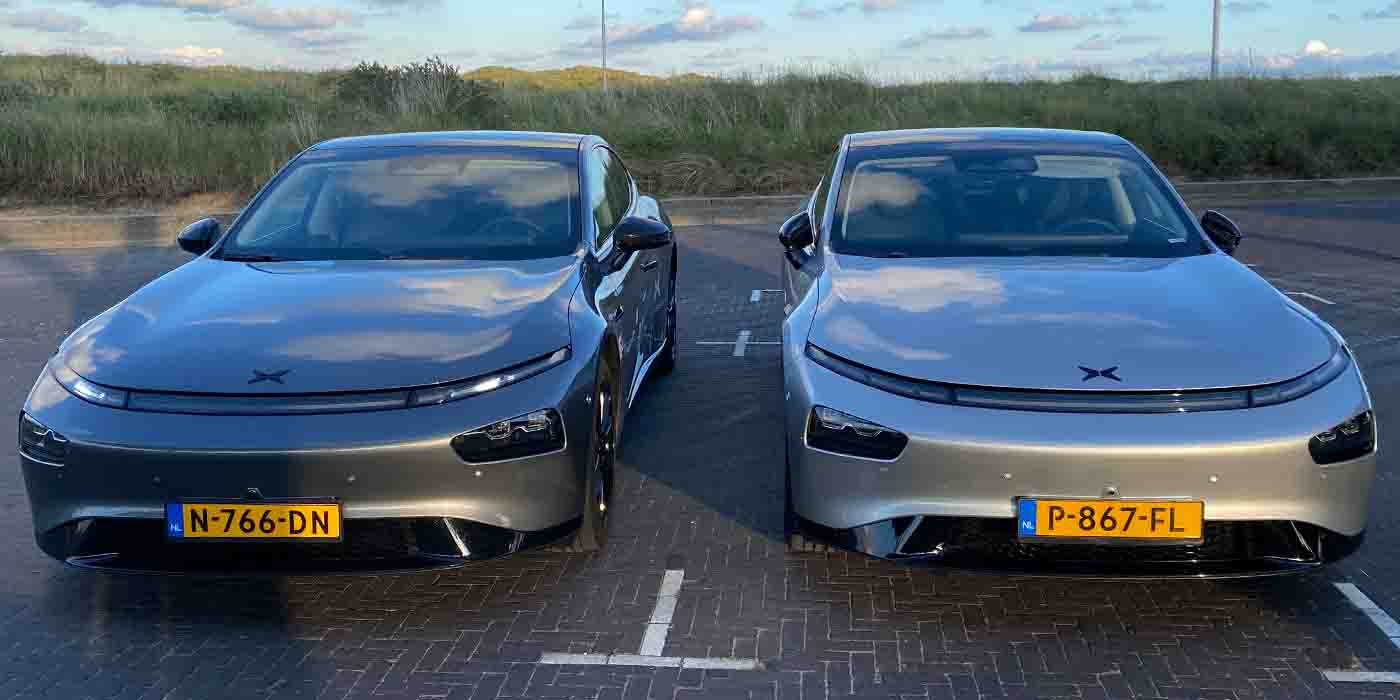




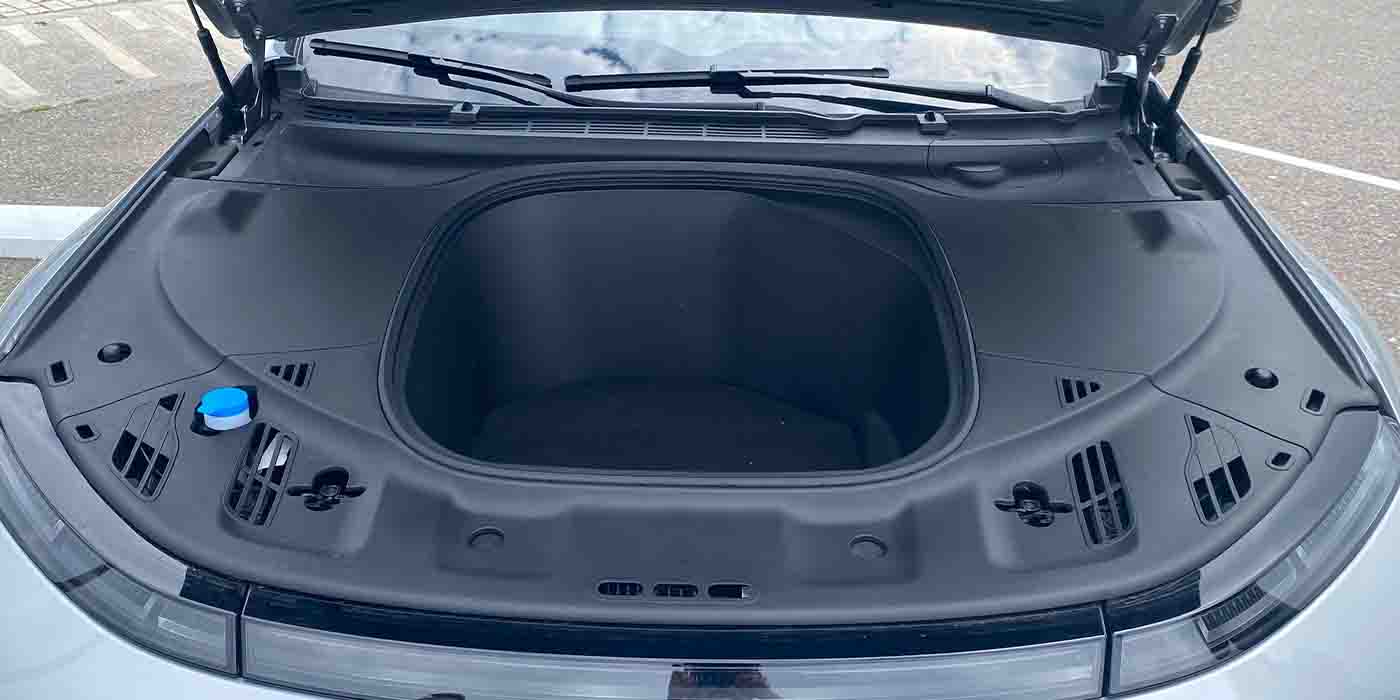
Inside the XPeng P7
The interior of the P7 is more than adequate. It doesn’t scream ultimate luxury like a Mercedes EQS, but it has more personality than the sterile interior of a Tesla. That being said, the minimalist dashboard was reminiscent of a Model 3.
Apart from the buttons on the steering wheel, there are no analog controls in the P7. Even to control the direction of the airflow of A/C and heat, I had to use climate controls on the center tablet. Some of the more old-school writers in our group hated this feature, but I thought it was pretty cool. My only issue was how many steps it took to tap through to climate control and aim where the air is going. That’s a bit tricky when you’re in the driver’s seat.
Overall, I thought XPeng’s software, Xmart OS, was intuitive, but there are definitely some bugs to work out. Many of the features that work seamlessly in China do not translate the same in the EU, and we were consistently told that the Xmart is a work in progress overseas.
This makes sense given that XPeng hasn’t officially begun selling in three of its four EU markets yet. It is very much working to get the EVs perfect before they hit roads, but more on that later.

The OS voice assistant command “Hey XPeng” worked most of the time we tried it, but sometimes took a couple of tries or was delayed. Again, easy issues to solve with an OTA update, but something that will need to be addressed. I personally use Apple CarPlay a lot and would have liked to have seen it integrated because connecting Bluetooth to listen to music was an issue at times. The display would say the phone was connected but nothing would play.
I would have loved to have seen a head-up display in the P7 as well. As the driver, you have your own display above the steering wheel, but now that I’ve driven so many EVs with a HUD, it feels like a must to me as the new standard.
XPILOT ADAS and self-parking
Once we got out of the bike-heavy streets of Amsterdam, I was able to get to highway speeds and test out XPeng’s advanced driver assistance system (ADAS) XPILOT 2.5. By utilizing HD millimeter-wave radar and ultrasonic wave sensors, I activated the P7’s adaptive cruise control (ACC). I found it to be more than helpful, keeping a safe distance from the vehicle in front of me while maintaining my set speeds – all while keeping at least one hand on the wheel.
My issue, however, was with XPILOT’s lane keep assist (LCC). LCC definitely did its job, but it’s a little rough around the edges. For instance, I ended up on a long stretch of road near Den Oever which was under construction, and XPILOT sure let me know. Because we were in temporary lanes, the system thought I was constantly veering off the road. Not an uncommon occurrence in an ADAS system, but the P7’s LCC warnings were excessive.
Not only does the system beep at you three times, but its cadence is in threes as well, so the EV beeps nine times each time it goes off. When that warning is happening every twenty seconds or so, it gets quite annoying. Again, another one of those small tweaks XPeng can and will make before it enters the market in the Netherlands.
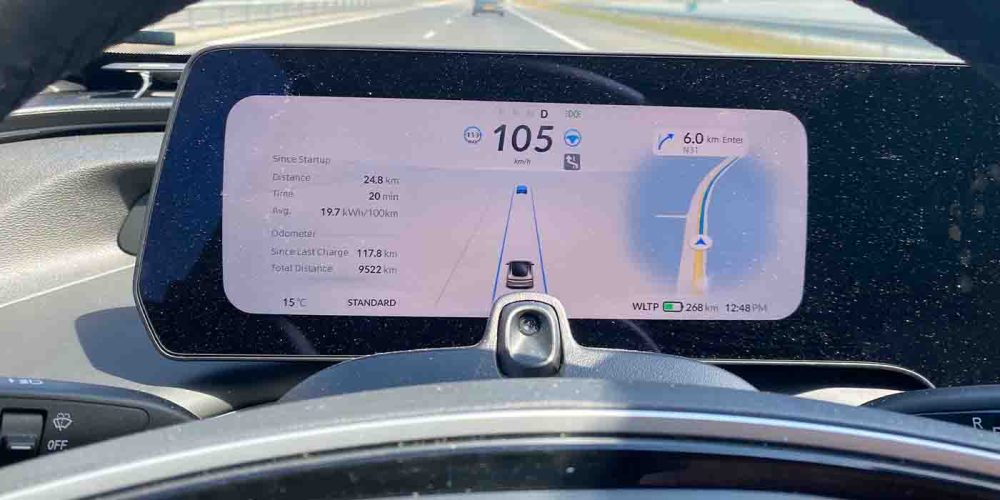
One of the most impressive features I experienced in XPILOT 2.5 was the self-parking feature. When you approach a parking lot, you can either use the voice command or the center display to activate it. As you creep through a lot, the EV’s sensors will detect open spots nearby. You simply select one and let the car do its thing.
I tried this in several different parking situations, many of which included tight quarters with other vehicles or concrete pillars, and the P7 parked itself perfectly each time. Here’s a video of the self-parking feature in action near the coast of Bloemendaal aan Zee.
Exploring the Netherlands in the XPeng P5
On day two, I got to drive the P5, XPeng’s newest sedan and one of the potential models soon coming to the Netherlands. Where the veteran P7 is a bit sportier, the P5 is more family-friendly. While it is shorter in length and width than the P7, it is taller and offers more cargo space. This EV sits upon XPeng’s A platform, code-named “David.”
As a front-wheel-drive single-motor EV, the P5’s 66.2 kWh battery is smaller than the 80 kWh pack on the P7, but only at the cost of about 5 km (3 miles) of range compared the P7’s performance. That said, it comes with significantly less acceleration than the P7 (0–100 km/h in 7.5 seconds).
Like its sedan sibling, I found the P5 to be an extremely smooth ride, perfect for the average EV consumer not looking for anything too wild on the performance side. I could see this EV doing better in the EU market due to its roominess and comfort while still delivering up to 465 km (290 miles) of WLTP range.

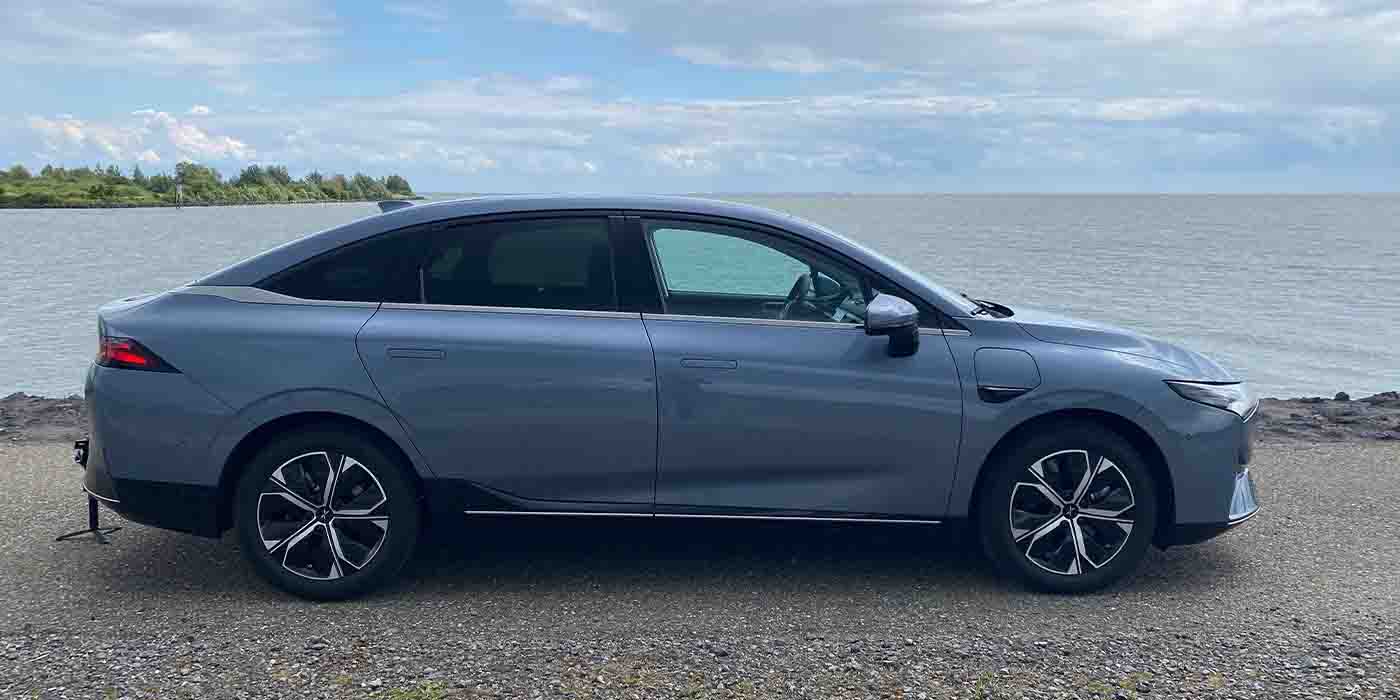
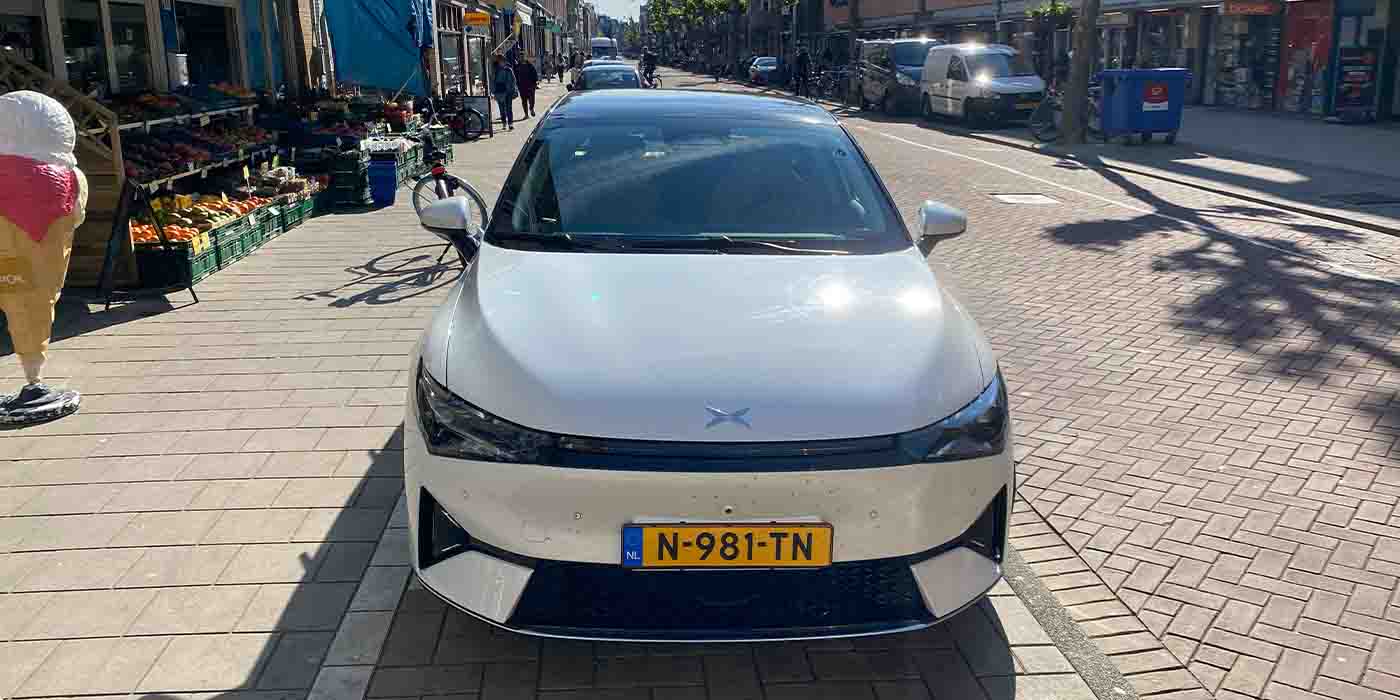
Interior of the XPeng P5
Inside the P5 was significant room for the driver and their passengers. The glass panoramic roof offered an even greater feeling of spaciousness, especially while driving past the agriculture and windmills of the Netherlands roadways.
The center display of the P5 is vertical and placed lower in the console compared to the P7, but was still equipped with Xmart and the XPILOT 2.5 features outlined above. I personally liked the display lower below the dash, providing a sleeker view from the back seat as you can see in the image above.
The driver’s side display was also larger, making it easier to view navigation and ADAS settings while driving. One issue I had while driving the P5 was switching lanes. The right side of the EV has a pretty significant blind spot, so you really have to rely on sensors alerting you to nearby vehicles on the side mirror.
As you can see in the image below, the P5 offers plenty of trunk space and an overall comfortable ride whether you’re the driver or a passenger (I got to be both).
Which XPeng EVs are coming to the Netherlands?
On my last day in the Netherlands, I got to visit XPeng’s new “Experience Center” located in the Westfield Mall of the Hague. It was there that we got to sit down with Isaac Yeo, the managing director of XPeng in the Netherlands, share our thoughts on the drives, and give feedback.
The point of this Experience Center, which opened on March 10, is to build hype and awareness of the XPeng brand in the Netherlands, while simultaneously gathering feedback from Dutch consumers about what they like and don’t like.
One thing is very clear in talking to the XPeng team in the Netherlands – they are in no rush to begin selling their EVs in the country. Instead, their focus is on getting it right the first time, ensuring the necessary structure is in place for customers when that inevitable point of sale does arrive. Yeo shared that the mentality of XPeng Netherlands is that it wants to be ready and prides itself on that fact.
Luckily, Yeo and other XPeng teams across the EU are empowered by a company CEO that is patient enough to allow these employees to take their time, gather as much intel as possible, and deliver a product that will fit the needs of its particular consumers. Marie Cheung, XPeng’s director of international media and communications, shared the company’s view of expansion into Europe:
The company has a very long horizon when it comes to the European market. The strategy for Europe is to be in the EU for the EU, so having the local infrastructure in place is vital. This includes sales, service, etc.; there is no immediate rush. First, the communication channels must be in place to best serve the customers when we do sell.
Currently, the XPeng Experience Center in the Netherlands is not selling EVs, but does offer test drives of the P7 and P5, allowing local customers to be notified at the start of sales. When XPeng does eventually begin selling in the Netherlands, the Experience Center will become a sales store to accompany its online configurator. With such a huge mall as its location, there is also the possibility of EV delivery and pickup locally, thanks to a massive parking garage beneath the building.
Which EV will hit the market in the Netherlands first remains unclear at this point as the team is, again, in no rush. It’s a fact that XPeng is keeping a close eye on sales in Norway and using all the compiled data and feedback from Sweden and Denmark to help aid in its decision on what to offer in the Netherlands.
No matter what XPeng model arrives first, it should do well. In my overall opinion, XPeng is already a competitor in the EU market. Its vehicles are more than adequate and are clearly well designed and manufactured.
The biggest issue I foresee is market saturation, and I expressed this to Yeo and the XPeng team, who were beyond open to the feedback. As a Chinese brand many consumers have not heard of, XPeng will really need to sit down and determine what its nucleus is as a brand to hone in on what sets it apart from EV competitors.
The bug fixes and software updates to more intuitively support EU drivers are one thing, but right now, there is nothing the XPeng logo represents that makes me think “I definitely need to learn more about this automaker.”
That’s no small task, but one the XPeng team in the Netherlands is not taking lightly. They have long-term goals for Europe and have every intention of becoming a mainstay in its growing EV market. It will be exciting to see how far they grow and how European customers respond.
Our next focus will be on XPeng’s upcoming SUV, the G9, which is promising a significantly upgraded XPILOT system and some impressive charge speeds. We should get an up-close look at that EV later this year. Until then, blijf kijken!
FTC: We use income earning auto affiliate links. More.
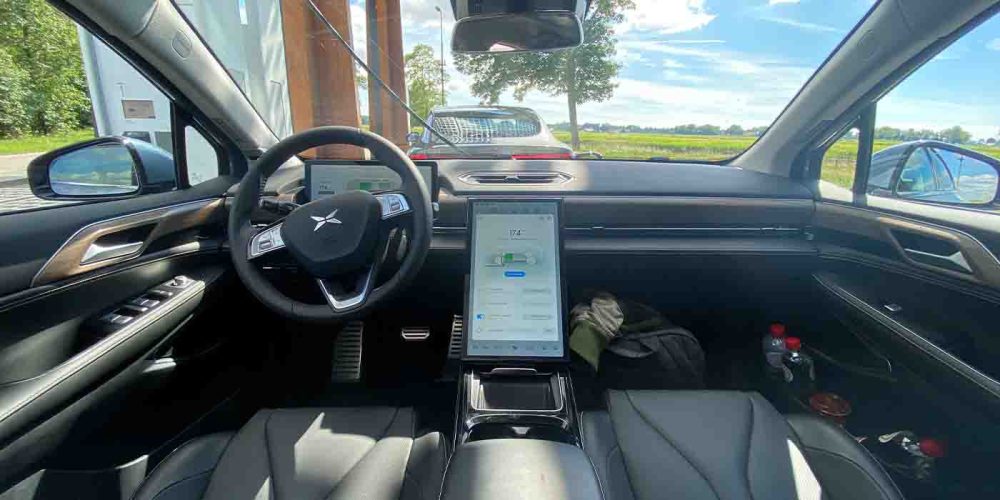
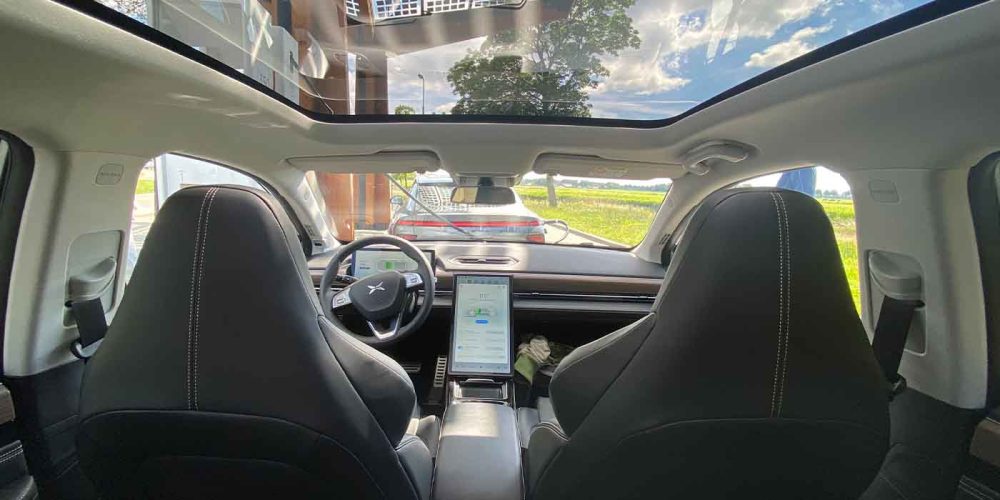
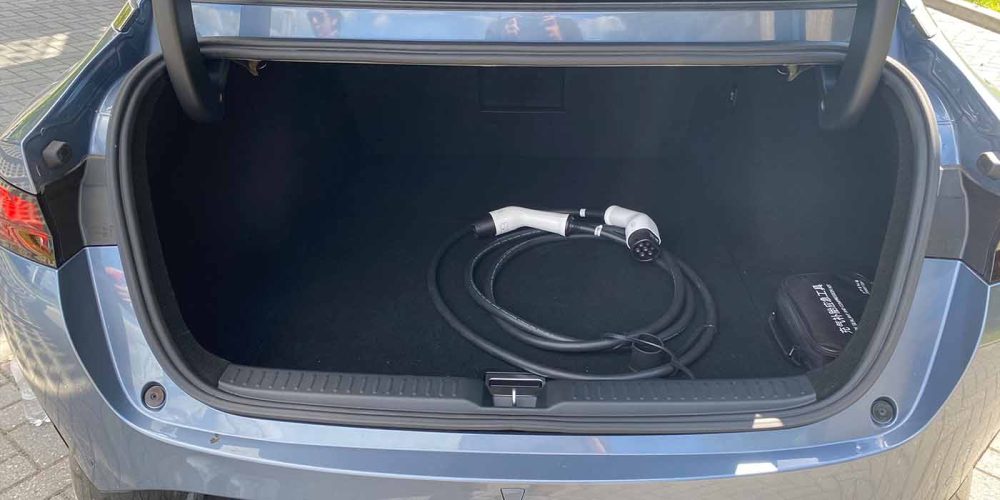



Comments